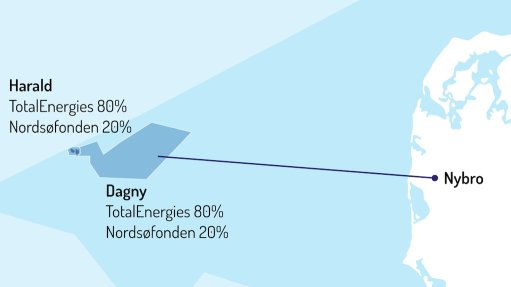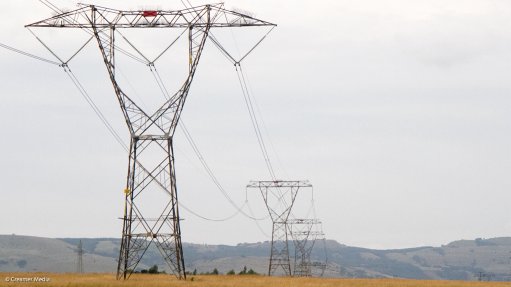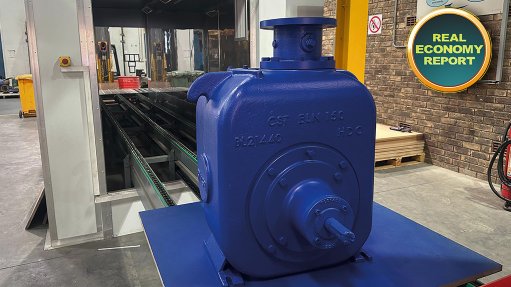Company not impressed with purity of SA fuels, further filtering required



MEDIUM CAPACITY FILTEREssentially, when refineries remove sulphur from fuel, they have to be careful not to affect the lubricity of the diesel
CRAIG FITZGERALDFilter Focus, on average, is finding that at the 4 μm level there are between 15 000 and 20 000 contaminants for every one millilitre of diesel
Wear control specialist Filter Focus South Africa says consumers should be aware that the fuels they are putting into their vehicles’ tanks contain high-levels of contamination and require more effective methods of filtration.
Filter Focus South Africa COO Craig FitzGerald tells Engineering News that the company’s extending lubricant submicron particle filtration system assists in significantly decreasing the levels of contamination found in fuels and can extend a vehicle’s fuel system component life span by 50% to 80%.
“The company analysed the fuel quality of one of banking firm Nedbank’s bulk diesel tankers in January, and found that at below 5 μm there were 30 034 contaminants and at less than 4 μm there were 34 400 contaminants for every one millilitre, this would amount to 34-million contaminants for every 1 ℓ,” says FitzGerald.
After undergoing several hours of microfine filtering from the company’s filtration systems, the levels of contamination fell to about 50 contaminants less than 5 μm and about 100 contaminants below 4 μm.
Filter Focus also undertook an oil filtration trial for South African energy and chemicals group Sasol in 2010 on new 15W40 engine oil and found that the unfiltered drum at 4 μm contained 17 364 contaminants but after one full pass through the company’s filter system this level fell to 11 895 contaminants.
“After 24 hours of filtration the number of contaminants fell to just 294,” FitzGerald boasts.
Therefore, he says it is not correct to state that South African refined fuels are clean and free from particulate contamination, as refineries are only attempt- ing to remove sulphur from fuel to reduce emissions levels once the fuel is combusted.
“Essentially, when refineries remove sulphur from fuel, they have to be careful not to affect the lubricity of the diesel,” FitzGerald explains.
Lubricity, he says, is the level of lubrication offered by the diesel and the lower the lubricity levels, the less ability the fuel has to provide lubrication of wetted components.
Further, FitzGerald notes that oil refineries are attempting to counter this by adding lubricity enhancers, as diesel lubricates fuel system components and pumps in vehicles.
“When solids contaminate the fuel, the issue of lubricity becomes a more critical factor,” he points out.
FitzGerald says Filter Focus has found that, in South Africa and globally, with the drive to reduce the levels of sulphur in fuel, combined with efforts to reduce vehicle emissions, is having a detrimental effect on the performance of automotive equipment.
“Modern fuel systems operate at higher pressures than in the past 30 years, to atomise diesel more efficiently. Diesel is a controlled burner, therefore, it burns from the outside in. So if a system’s diesel droplets increase in size, the burn period increases accordingly,” he explains, adding that when diesel is finally atomised it burns up quickly and less unburnt fuel will exit through a vehicle’s exhaust pipe.
Original-equipment manufac- turers have recently been increas- ing injector and fuel operating pressures, while refineries have been removing sulphur from diesel.
FitzGerald says what is not being addressed is the contamination in the fuel itself in the form of rust, sand, dust, water moisture or other forms of contamination.
He explains that lower levels of lubricity and higher operating pressures have a sandpaper-type effect on fuel-system components and on diesel injectors.
Using contaminated diesel fuels in high-pressure engines is a further cause of rapid engine oil deterioration.
FitzGerald adds that the effect of the contamination, over time, will result in fuel injectors eroding and, as this occurs, the diesel droplets, which have been atomised, start increasing in size.
So, when an exhaust valve opens in a combustion chamber, fuel will still be burning as result of its increased size. However, when an exhaust valve opens and sucks the burning fuel into a vehicle’s firebox and extinguishes that fire, unburnt hydrocarbons will enter and eventually exit the exhaust pipe.
Therefore, the vehicle’s carbon dioxide emissions increase instead of decreasing.
Hence, FitzGerald points out that a refinery’s cleaner fuels programme needs to be holsitic and not soley focused on reducing sulphur levels in fuel.
Filter Focus, on average, is finding – based on research it has undertaken on new unused diesel – that at the 4 μm level there are between 15 000 and 20 000 contaminants for every 1 mℓ of diesel, which equates to between 15-million and 20-million contaminants for every 1 ℓ of diesel, which is currently regarded by the fuel industry as acceptable.
“Filter Focus does not believe this is an acceptable level of contamination for a fuel or lubricating system as contamination in any size or form is detrimental and will cause significant harm to vehicles and industrial equipment. Standard filtration is simply insufficient to protect modern equipment,” concludes FitzGerald.
Article Enquiry
Email Article
Save Article
Feedback
To advertise email advertising@creamermedia.co.za or click here
Comments
Press Office
Announcements
What's On
Subscribe to improve your user experience...
Option 1 (equivalent of R125 a month):
Receive a weekly copy of Creamer Media's Engineering News & Mining Weekly magazine
(print copy for those in South Africa and e-magazine for those outside of South Africa)
Receive daily email newsletters
Access to full search results
Access archive of magazine back copies
Access to Projects in Progress
Access to ONE Research Report of your choice in PDF format
Option 2 (equivalent of R375 a month):
All benefits from Option 1
PLUS
Access to Creamer Media's Research Channel Africa for ALL Research Reports, in PDF format, on various industrial and mining sectors
including Electricity; Water; Energy Transition; Hydrogen; Roads, Rail and Ports; Coal; Gold; Platinum; Battery Metals; etc.
Already a subscriber?
Forgotten your password?
Receive weekly copy of Creamer Media's Engineering News & Mining Weekly magazine (print copy for those in South Africa and e-magazine for those outside of South Africa)
➕
Recieve daily email newsletters
➕
Access to full search results
➕
Access archive of magazine back copies
➕
Access to Projects in Progress
➕
Access to ONE Research Report of your choice in PDF format
RESEARCH CHANNEL AFRICA
R4500 (equivalent of R375 a month)
SUBSCRIBEAll benefits from Option 1
➕
Access to Creamer Media's Research Channel Africa for ALL Research Reports on various industrial and mining sectors, in PDF format, including on:
Electricity
➕
Water
➕
Energy Transition
➕
Hydrogen
➕
Roads, Rail and Ports
➕
Coal
➕
Gold
➕
Platinum
➕
Battery Metals
➕
etc.
Receive all benefits from Option 1 or Option 2 delivered to numerous people at your company
➕
Multiple User names and Passwords for simultaneous log-ins
➕
Intranet integration access to all in your organisation




















